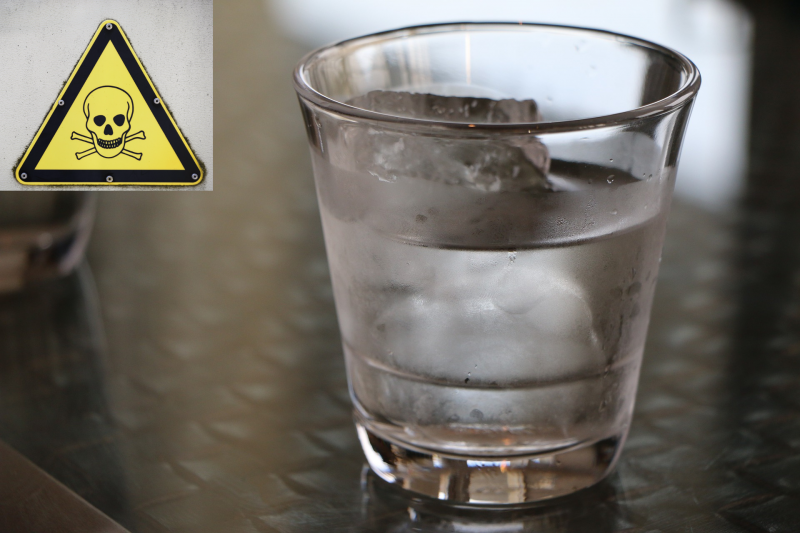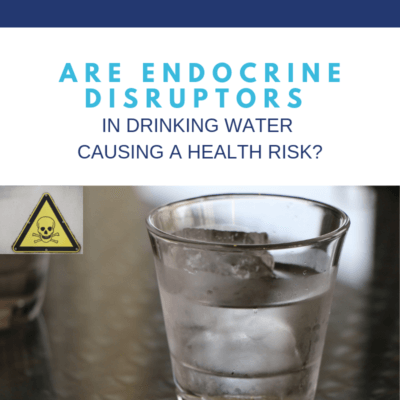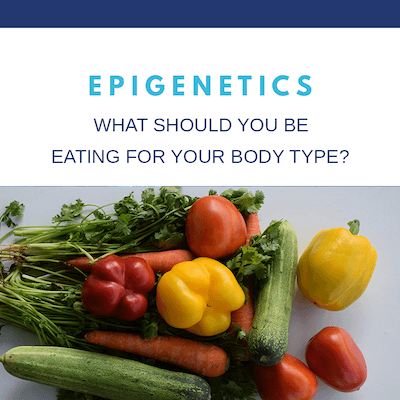
We all know that water is a basic necessity for living. Although we can go without food for 3 weeks or more, we cannot survive longer than a week without water.
Those of us living in modern countries have access to clean drinking water, but how clean is it really?
If prime health is a concern for you, you will want to know the facts about the water you consume and some of the hidden dangers for men. Let’s focus on one sneaky culprit: endocrine disruptors in drinking water.
What is an endocrine disruptor, what are the dangers, and more importantly, how can you protect yourself from its negative impacts?
What are Endocrine Disruptors?
The endocrine system maintains homeostasis of the bodily systems through a delicate balance of hormones. Endocrine disrupting chemicals (EDCs) are substances that change the course of endocrine systems in a way that adversely affects the body. These chemicals can produce adverse developmental, reproductive, neurological, and immune effects in humans and animals. Both natural and man-made substances can cause endocrine disruption and can be found in many everyday products. These everyday products include plastic bottles, metal food cans, detergents, flame retardants, food, toys, and cosmetics.

Endocrine disruptors can mimic naturally occurring hormones in the body like estrogens (the female sex hormone), androgens (the male sex hormone), and even thyroid hormones, potentially producing overstimulation. They can also bind to a receptor within a cell and block a hormone from binding which impacts the body’s ability to respond properly. Endocrine disruptors may interfere with the way the body makes or controls natural hormones or their receptors. Thus it affects other organs like metabolism in the liver and kidneys.
What are examples of Endocrine Disruptors?
Some chemical endocrine disruptors which directly impact male health include BPA, Phthalates, Altazine, and Estradiol. And the sad truth is that many of these endocrine disruptors are in drinking water. We can also find Endocrine Disruptors in our natural environment, phytoestrogens being the most common culprit. Let’s go into greater detail about these endocrine disruptor chemicals, and where you can find them. Below is a common endocrine disruptor list:
Bisphenol A (BPA)
Bisphenol A (BPA) is the most commonly known endocrine disruptor that has recently gotten a lot of focus recently but is a problem far from resolved. Manufacturers produce the chemical called BPA, primarily in the production of polycarbonate plastics, epoxy resins, and food can linings. Studies show that testosterone becomes reduced within just 3 days of BPA exposure and that those consuming BPA are 4 times more likely to develop sexual disorders such as low libido and ejaculatory disorders. Furthermore, exposure during gestation puts a child at more risk for adult testosterone imbalances.
In their September 2008 BPA review, The National Toxicology Program’s (NTP) expressed “some concern for effects on the brain, behavior, and prostate gland in fetuses, infants, and children at current human exposures to BPA.” Although adopting a BPA-free process, some companies are simply replacing BPA with another compound called BPS. Studies have shown BPS to be just as dangerous as BPA. For more information on the invasiveness of BPA see my article, “Does BPA Cause Sexual Problems?”

Phthalates
Manufacturers use chemicals called Phthalates to manufacture a wide variety of consumer food packaging, some children’s products, pharmaceuticals, household items and body care products like shampoo. I consider phthalates the worse anti-androgen. Studies show the presence of phthalates cause low testosterone and male infertility as well as male congenital defects such as testicular dysgenesis, cryptorchidism (undescended testicles), and hypospadias (abnormal urethra growth). In 2006, NTP found that phthalates may pose a risk to human development, especially critically ill male infants which further indicates its correlation to male health.
Atrazine
In agriculture, farmers world-wide commonly use Atrazine, a toxic herbacide, especially for corn and grains. Interestingly, Europe has banned its use, but companies in the U.S. still heavily use Atrazine. A study done on frogs exposed to this herbicide showed that Atrazine inhibits testosterone synthesis so much that 10% off the frogs became feminized, meaning the males become females who reproduced and laid eggs after exposure. Read that again, the males actually became females and laid eggs.
Phytoestrogens & Estradiol
Phytoestrogens & Estradiol are substances that have estrogen hormone-like activity that reduces androgen activity. Contraception companies use Estradiol, a synthetic form of estrogen, as a key ingredient in birth control pills. You may not think that men are at risk because women are the ones who normally take birth control. But, contraceptives are just one of many pharmaceuticals that find their way into our water and food through off waste. Eye opening, right?
One study showed a dramatic effect on fish whose testosterone levels fell due to estradiol exposure. Similarly, phytoestrogens are naturally occurring substances in plants that have hormone-like activity. Soy-derived products, hemp and flax seed are examples of phytoestrogens. Soy, now 90% GMO, is the worst offender, decreasing testosterone and sperm production.
The Concerns Around Endocrine Disruptors in Water and Other Products
Manufacturers use these endocrine disruptors in numerous consumer goods and personal care products. This exposes humans to the harmful effects of these substances in a variety of ways. When our bodies absorb these toxic chemicals, transmitted through our food and our water without our knowledge, it can create deadly complications. Once exposed, many of these chemicals remain in the body for a long time, causing health challenges by cumulative effect.

In a study of 20 biopsies, they found 19 different endocrine disruptors in all 20 bodies! Furthermore, pregnant women can pass these endocrine disruptors to their babies through the womb, having a transgenerational effect (Wang et al, 2015). This means that even if you have avoided exposure as much as possible, your health could be at risk due to any exposure from your parents. Experts report that if tested, 90% of us will show detectable BPA in our urine and 98% of us will show phthalates in our system. This is scary!
As mentioned above, studies show these endocrine disruptors decrease testosterone leading to infertility, testicular and prostate cancers. The rise of endocrine receptors in the environment as well as the simultaneous rise of male reproductive disorders calls attention to the idea that endocrine disruptors may be responsible for the decline in male reproductive health (more in this article: https://www.ncbi.nlm.nih.gov/pmc/articles/PMC6043754/). Other negative impacts of endocrine disruptors include:
- insulin resistance
- obesity
- ADD
- depression
- and immune dysfunction such as allergies and skin conditions.
Because manufacturers use them so predominantly, experts are finding these chemicals in our shampoos, clothes, toothpastes, soaps, utensils, and deodorant! Now, more than ever, we need to carefully choose the items we purchase and put into our body.
Regulations to Remove Endocrine Disruptors
In order to tackle this issue, some countries have already established regulations to remove endocrine disruptor chemicals from everyday products. France has outlawed BPA in food containers and DEHP in child-related products. In the United States, legislation such as the Toxic Substances Control Act, the Food Quality Protection Act, and the Safe Drinking Water Act gives the Environmental Protection Agency (EPA) the power to control regulations upon chemicals that are endocrine disruptors. The Endocrine Disruptor Screening Program introduced by the EPA in 1998 has allowed for the testing of over 85,000 chemicals but has yet to be implemented. Although we have seen some legal change, we still need more countries to adopt these regulations. And for the potential enactment of new legislation to happen, we need the proper agencies to screen a wider range of chemicals.
Furthermore, most of this change was the result of public outcry and pressure, not company integrity. And in underdeveloped countries, the proper authorities have made limited efforts to warn people about these serious issues. Companies that create these chemicals do not openly explain the methods of minimizing exposure. Nor do they develop efficient mitigation strategies in the environment. These same companies could use a wide diversity of estrogen-degrading microorganisms to develop biological filters in the post-treatment of wastewater.
Endocrine Disruptors in Drinking Water
In many highly populated countries, authorities source the country’s drinking water from the same rivers and lakes that contain sewage and industrial discharge. For example, the River Thames which flows through London, has passed through drinking water and sewage discharge 5 times.
According to the National Center for Biotechnology
“Under these types of circumstances, any accumulation of endocrine disrupting compounds from sewage or industry potentially affects the quality of drinking water. Neither basic wastewater treatment nor basic drinking water treatment will eliminate the estrogens, androgens or detergent breakdown products from water, due to the chemical stability of the structures. Hence a potential risk to health exists.”
As a result of this concern, authorities have turned their attention toward enhanced wastewater treatment and are implementing advanced techniques. This treatment employs particle removal, ozone oxidation and activated charcoal filters. That being said, recent studies showed that 94% of lakes in the midwest, our biggest supplier of corn, were positive for Atrazine and 29% of drinking water samples across the U.S. contained phthalates.
We can all agree that water is fundamental for human health and well-being. Paradoxically, the loose regulations have contributed to the alteration and deterioration of water supply sources causing risks for the population in the past. Since the end of the 19th century, the role of drinking water in exposing populations to pathogens, and improvements in its quality in order to prevent illness, has been widely documented and debated. Furthermore, what is ‘healthy’ to be in your water, such as Fluoride and Chlorine, has recently become challenged.

How can I drink better water?
My intention is not to scare you out of drinking water, however I hope it will inspire better choices around the sources of your water. Not all bottled water is in BPA-free bottles . Due to the lack of screening, you can’t be sure what other endocrine disruptors are leaking into your water through the plastic. Bottled water is a much safer choice when you are in countries with poor water regulations. However, we have no proof that bottled water is healthier than tap water. The FDA only regulates bottled water if it crosses state lines. So authorities are not testing 70% of bottled water for contaminants!
Even distilled water does not remove endocrine disruptors. On the other hand, the United States highly regulates its drinking water systems (tap). The U.S. also frequently tests its water systems for harmful pollutants. Your most cost efficient and healthy option is to filter your own tap water beyond what your city is already doing.
What about water filters?
Of the vast array of water filter products you can choose from, pitcher/faucet filters such as the Brita filter are the most common. Although this can reduce chlorine and improve taste, because the carbon in the filter is not solid, they are not effective in removing endocrine disruptors in water, fluoride, or heavy metals. You can check your local water quality report (through your local water company’s website) to see what contaminants are in your water. Then you can determine how much to invest in your filtration.
No matter which you choose, if you want to remove endocrine disruptors in water, you want to ensure your filter is solid block carbon. These units may cost you more upfront. However, in the long run, they are your least expensive option because they require less filter replacements. A solid filtration system can last you years before changing your filters!
The most common and highly rated of these filters is the Berkey brand. Berkey filters come in many sizes for different uses. You can even use them to filter river water for drinking! This can be bulky however, as it is a counter-top filter that can take up quite a lot of space. Sometimes it makes the most sense to invest in an under-counter multi-stage water filter system for your household. Overall, the Berkey brand is a fabulous filter for removing endocrine disruptors in drinking water.
It’s not just about Endocrine Disruptors in Drinking Water
With a deeper understanding of endocrine disruptor compounds, you now have new knowledge to inform better choices for your health. My recommendation is for a balance of mitigating exposure and detoxification.
- Reduce Exposure To Plastics. You want to avoid plastics used for storing and cooking. Never use plastic to microwave or hold hot drinks or food. Even your plastic coffee makers can leak endocrine disruptors into the water that becomes your morning cup of joe. Reading labels in addition to choosing natural body products and eliminate fragrances from personal care items, especially laundry can help. One of my favorite apps is Healthy Living. Simply scan the product in the grocery store. Then, this nifty software will tell you what endocrine disruptors are in those products!
- Build Your Immune System. Eliminate highly processed foods avoiding those with ingredients that start with ‘benz’ or ‘phen’. Limit grains (especially corn and wheat) as well as dairy. Eliminate soy products and check labels because food companies often use soy lecithin to bind products. Eating wild caught fish and filling your plate organic produce will strengthen your immune system. It will also prevent the dangerous build up of toxins in your system.
- Support Through Detox. Given the cumulative effect of endocrine disruptors, I recommend using herbs to gently detox your body from these toxic chemicals. Some herbs that are especially helpful for endocrine disruptors specifically are green tea, holy basil, pau darco, and curcumin (turmeric). Research shows DIM and quercetin supplements also support in detox.
Conclusion
It is clear that endocrine disruptors in drinking water is a concern. Not only does it effect male health but also human lifespan and longevity. We can’t rely on the EPA and water companies to ensure that our drinking water is free of endocrine disruptors in drinking water. So it is important to take your health into your own hands through the above recommendations. You can reduce the negative impacts of BPA, endocrine disruptors in water and other toxins through conscious consumer choices and lifestyle changes.

As a powerful man looking to optimize your life, you should be on the path of lifestyle health program. With my suite, I test your DNA, interpret the results, and come up with a customized plan. This customized plan is specific to YOUR individual genes and lifestyle. It will improve every area of your life from your health and energy to your professional productivity to your personal relationships.
It’s time for you to get in the driver’s seat of your health. With elite men’s optimization program, we’ll put you at the peak of your human potential.
Schedule a consultation to learn how to personalized health advice so you can live your life to the fullest.
Ready to take the next steps?
Download the Blueprint
Schedule a Call
**************************
Tracy Gapin, MD, FACS is a board-certified Urologist, world renowned Men’s Health & Performance Expert, Author, and Professional Speaker. Using state-of-the-art biometric monitoring, nutrition and lifestyle intervention, Dr. Gapin coaches Fortune 500 executives and evolutionary leaders of business, sports medicine, and high performance. He specializes in cutting-edge precision medicine with an emphasis on epigenetics, providing men with a personalized path to optimizing health & performance. www.GapinInstitute.com















 In Male 2.0™, Dr. Tracy Gapin has turned everything we once thought we knew about men’s health and performance upside down. The old model of how to be “a man” is broken. A man who works himself to death. Unfortunately, a man who tries to NOT get sick but isn’t really healthy either. And a man who takes a pill for every ill but is never really cured. That was Male 1.0. Now, imagine being THE MAN ─ owning your performance in the bedroom, the weight room, and the boardroom. Living a fully optimized life. Becoming limitless. This is Male 2.0!
In Male 2.0™, Dr. Tracy Gapin has turned everything we once thought we knew about men’s health and performance upside down. The old model of how to be “a man” is broken. A man who works himself to death. Unfortunately, a man who tries to NOT get sick but isn’t really healthy either. And a man who takes a pill for every ill but is never really cured. That was Male 1.0. Now, imagine being THE MAN ─ owning your performance in the bedroom, the weight room, and the boardroom. Living a fully optimized life. Becoming limitless. This is Male 2.0!